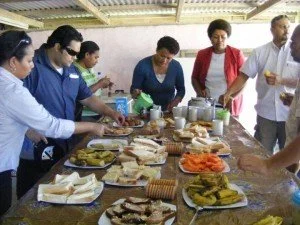Sustainable Land Management – National Action Plan
The Cook Islands are a diverse mix of islands ranging from the larger volcanic islands with steep escarpments to remote low lying atolls. Land and soils are extremely limited. Sustainable Land Management is a key priority for the Cook Islands Government.
P4SD were engaged to develop one of the first National Action Programmes that are effectively aligned with the United Nations Convention to Combat Desertification (UNCCD) 10 year Strategy (2008-2018) aimed at addressing land degradation and sustainable land management.
The Cook Islands suffer from extreme exposure with minimal land, large coastline to land mass ratios, limited fertile and accessible land as well as growing population pressures. Over 70% of the land is unsuitable for agriculture or urban development, leaving the remaining land which is predominantly located along narrow coastal plains, under significant pressures to accommodate tourism and housing developments.
Whether it is the larger volcanic islands (such as Rarotonga), or the remote atolls (such as Manihiki), there are concerns with the land resources for food security, land for habitation, water shortages, impacts from climate change and the need to protect the remaining bio-diverse habitats. Given the fragile and vulnerable state of the natural land resources of the Cook Islands understandably, sustainable land management (SLM) is one of the government’s key priorities.
As a Party to the UNCCD, the Cook Islands needed to prepare a National Action Plan (NAP) that is well aligned with the global 10 year Strategic Plan (2008-2018) in order to address land degradation and sustainable land management. The NAP addresses underlying causes of land degradation and drought, and identifies measures to prevent and remediate the situation, providing practical steps to address land degradation at national and local levels.

